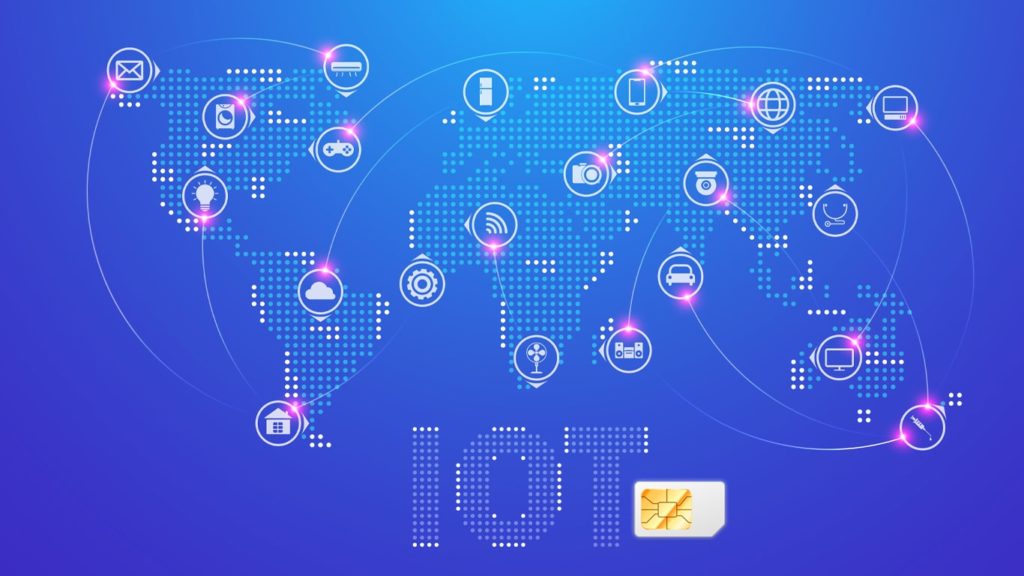
The full form of IoT is the Internet of Things. An IoT SIM card is also known as M2M (Machine to Machine) SIM card. It is a variant of traditional cards you use in consumer mobile devices like smartphones and tablets but designed to be used in IoT devices. Hence, these are more flexible, durable, and secure than traditional, i.e., consumer SIM cards. The work of an IoT SIM card is to establish a connection to your host network and then transmit data between your device and the other IoT platform.
While you can do this with a traditional SIM card too, the practice is not recommended as they are not well-equipped for most IoT projects. The needs of IoT devices are different from devices like phones and tablets. IoT devices need to maintain secure connections all the time, survive in harsh environments, and meet project-specific needs.
Why Were IoT SIM Cards Created?
Both IoT and traditional SIM cards perform a similar function, i.e., keep devices connected to the internet. However, that’s the only resemblance they have in common. IoT SIMs need to manage devices remotely as well, along with being connected to the internet. These cards are purchased and activated in bulk, unlike the traditional SIM cards, which are bought and enabled by an individual consumer one at a time. Moreover, all the IoT SIM cards fetch data from a single aggregated pool of data plans, which makes the projects more cost-efficient.
How Durable are the Internet of Things SIM Cards?
Because IoT devices are meant to survive in severe circumstances, exposed to extreme temperatures and strong winds or water, IoT SIMs are built to endure all these things. That’s why they are way more rugged and long-lasting than traditional SIM cards. They were created using industrial-grade techniques, hence they are more resistant to corrosion and extreme weather conditions. They can endure intense vibrations and temperatures ranging between -40 to 105 degrees Celsius or -40 to 221 degrees Fahrenheit. This means you can deploy your IoT device in any kind of jarring environment without worrying about its SIM card being damaged.
Lifespan of an IoT SIM Card
The time your IoT SIM card can remain functional is an important concern. As mentioned, IoT devices are oftentimes deployed in such places or conditions where replacing their SIM card frequently is impossible. For instance, it becomes very difficult to substitute SIM cards if the IoT device is deployed deeply under the ground or underwater, too high on a mountain top or a tower, and so on. That’s why IoT SIM cards need to have a long lifespan.
Traditional SIM cards generally have a lifespan of around 3 to 4 years. On the other hand, IoT SIM cards can last for a decade or longer. Embedded SIM or eSIM is even more durable as it is surface mounted to the IoT devices and is vacuum-sealed as well. Even in unforgiving environments, it can last longer than a decade. That’s why IoT eSIMs are the most sustainable choice.
Steered vs Non-Steered Internet of Things SIM Cards
A large portion of IoT devices requires roaming on several networks. However, it is important to note how these SIMs connect outside your primary network. Unlike traditional SIMs, these cards offer either steered or non-steered multi-network roaming. A steered IoT SIM card will always prefer your primary network for roaming, even when your primary network is weak and other networks are stronger. They will stay connected to your primary network until it is completely out of range. This will be harmful to your IoT device as it may stop functioning in absence of poor or no signal.
On the contrary, non-steered IoT SIM cards do not stick to the primary network. This card will connect to the strongest network available, irrespective of if that network is your primary one. In some IoT devices like medical or navigation-related ones, a non-steered IoT SIM is crucial. That’s because they require an uninterrupted connection at all times. In the case of these SIMs, network operators have arrangements to use each other’s networks when in need so that the flow doesn’t break.
Different IoT SIM Models and Form Factors
There are 3 IoT SIM models: standard, industrial and automotive. Let’s talk about them one by one.
- Standard IoT SIMs: These SIM cards are designed for IoT devices. However, they are generally developed based on traditional SIM cards. That’s why they are not very durable. They are meant to be used in less harsh environments.
- Industrial IoT SIMs: These SIM cards are very durable and strong. They are built to endure rough and ever-changing conditions and are resistant to extreme temperatures, corrosion, vibrations, etc.
- Automotive IoT SIMs: These are very similar to industrial IoT SIMs, but are devised for motor vehicles rather than industrial machinery. They are quite resistant to vibrations and motions happening in the motor vehicle daily.
IoT SIM cards come in various form factors, like the traditional SIM card sizes. 1FF is the largest SIM form factor (about the size of a plastic credit card) which is no longer in use. 2FF or mini-SIM card is the industry standard SIM used in devices like vending machines, payment points, and vehicles. 3FF or micro-SIM is used in portable industrial devices like mHealth, GPS, tablets, and so on. 4FF or nano-SIM is great for small IoT devices, however, it is not resistant to harsh environments. MFF2 or eSIMs are embedded into devices, that’s why they are, at the time of writing, the strongest and smallest IoT SIMs.